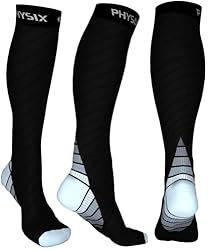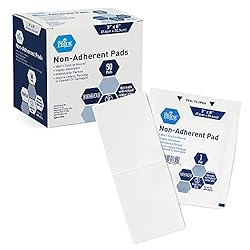Shopping for clothes can be fun, but this isn’t the case when it comes to deciding what to wear after knee surgery. The options for adaptive clothing are limited, and it is difficult to change your clothes or try them on. Yet, comfortable clothing is crucial, especially in the early stages of recovery, when you need to keep your legs flat for weeks.
This article is part of a series that cover my recovery journey for my spontaneous bilateral patellar tendon rupture surgery. It will focus on wound care, tips, and resources on what to wear after knee surgery. Hopefully you will be able to find something that helps make your life a little more comfortable as you recover! (Links to more tips and resources for after surgery home care can be found at the end of the post.)
“Comfortable #clothing is crucial, especially in the early stages of #recovery. This post will focus on wound#care, tips & resources on what to wear after #kneesurgery.” #ChronicPain Click To Tweet❗️ Disclaimer: Knee injuries and surgeries, or any major surgery for that matter, vary widely from person to person. Your age, lifestyle, weight, circumstances, other chronic health conditions, medications, comorbidities, allergies and other issues can impact your recovery timeline, as well as the tools and methods required. They should be adapted for YOU.
This article and the resources provided below are based on MY own personal experiences with spontaneous bilateral patellar tendon ruptures, as a person with many chronic illnesses. It also includes extensive options to cover various knee surgeries – not everything is meant for your specific type of knee injury or knee surgery. They are meant for educational purposes and not to be substituted for medical advice. Please consult your own medical provider before trying anything out.
This post also contains affiliate links. It will cost you nothing to click on them. I will get a small referral fee from purchases you make, which helps with the maintenance of this blog (approx. $100/month). Thank you!
Resources with a star ⭐ next to them are ones I’ve personally tried and would recommend!
Table of Contents
1. Comfortable, Accessible Clothing & Underwear (Half Your Body is Out of Service)
The only full-range brand I could find was Slick Chicks. Apart from underwear, they have adaptive shorts, bras, tops, joggers and hoodies. You can browse their products here (unaffiliated).
Pin to Your Accessibility, Chronic Illness & Disability Boards:
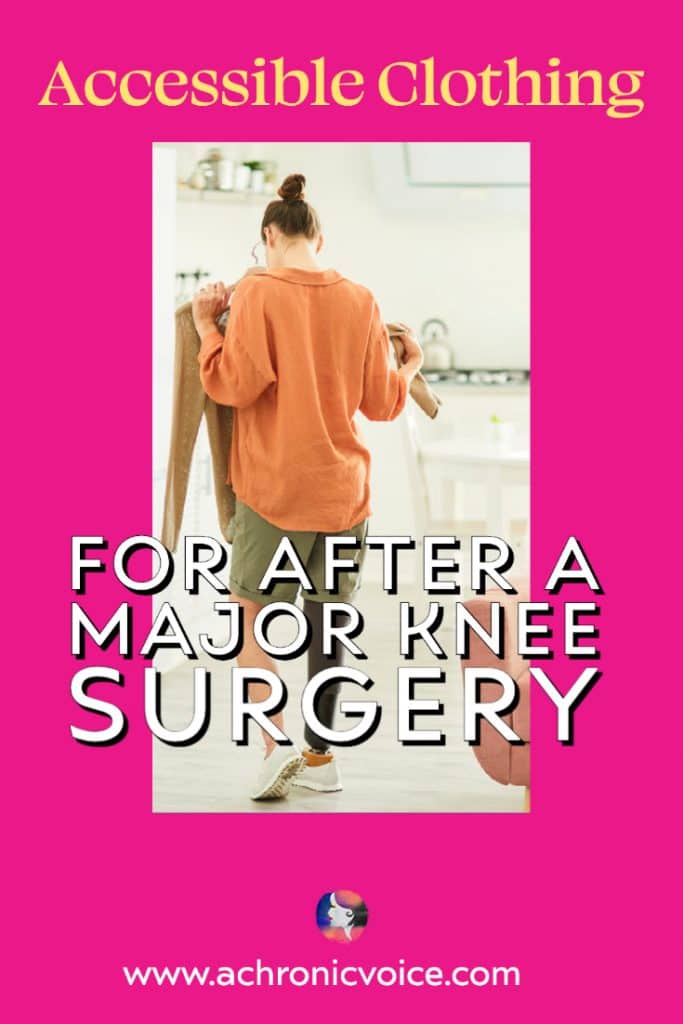
1.1 Accessible Underwear (Comes with Side Fastenings)
It’s a nightmare to pull your underwear down each time you need to pee. Adaptive, accessible underwear come with hooks or velcro, which you fasten at the sides instead. I prefer the velcro straps as they’re easier to stick on and off. Although, they can irritate the skin if you don’t stick them back perfectly.
1.2 Overnight Period Panties (Disposable & Leak-Proof)
Speaking of underwear, periods are another nightmare after a major knee surgery. Apart from the discomfort, there’s also added work to do to keep clean.
I use disposable overnight panties which are more comfortable, leak-proof, and can be torn open at the side to be discarded. This saves you the pain of pulling them down your legs and past your knee injury site again. I use the largest size, as it still fits and allows the skin to breathe better.
I actually used these in the hospital, and the nurses were amazed. They didn’t know that they could get them at the regular chemist store. Some of them even started using them at night, too!
1.3 Accessible Shorts & Baggy Dresses
You can also wear a baggy cotton nightdress at home, which is comfortable even if there are guests. Whilst dresses are more comfortable, they’re not practical for days when you need to go for appointments. So I bought some adaptive shorts that also fasten at the sides with velcro.
Dresses tend to bunch up when you’re being pushed around whilst on a wheelchair. If your legs need to be kept straight, then you’ll need to be transferred and fit into suitable transport as well. I had to hire a private ambulance for a few months, and needed two paramedics to carry or haul me up with my legs laid as flat as possible. You can see how troublesome dresses can be in such scenarios.
I wasn’t even able to use the disabled bathrooms outside, because I couldn’t move or stand. So, we had to manoeuvre the whole process whilst stretched out on my wheelchair, and the adaptive shorts were handy.
Visual Examples:
2. Compression Socks & Gloves (for Blood Circulation & Pain Relief)
Visual Examples:
2.1 Compression Socks
Compression socks are commonly used for people with Antiphospholipid Syndrome like me, who run the risk of blood clots. They’re also used by pregnant women for similar risks. Compression socks help with blood circulation, which can be useful when you’re sedentary in bed for months post knee surgery or major surgery. I admit that I try to avoid them as they can be uncomfortable. But even if you dislike wearing them, a pair of regular socks can help to keep your feet warm and cosy.
2.2 Compression Gloves
I also bought some compression gloves, and must say that they’re one of the best investments I’ve made for pain management. And so simple at that! I’m not sure why I didn’t use them earlier. I even wear them to school now, and even to sleep at times.
I have a few hand therapist-designed ones from Grace & Able, whose founder also lives with Rheumatoid Arthritis, and sponsored one of our Christmas Giveaways! I also have pairs that are textured, which help me to grip objects better. And ones that come with a wrist strap to help with wrist pain. I also like my copper gloves that extend all the way to my elbow. This is helpful for days when it’s not just my hands that are aching, but also parts of my wrist and forearm.
3. Things Needed to Clean & Care for Your Knee Surgery Wound
The average time it takes for skin wounds to heal is about 2 weeks. Most people would have been able to remove all the bandages from their knee surgery by then. Mine took almost 2 months, most likely due to my steroid medications and autoimmune disorders themselves. Thus, I had to keep my knees wrapped up that whole time.
I had to change my wound dressing every 3-4 days, but this differs for each person. Check with your own surgeon on how often you need to change them. It might not be wise to change them daily, as each time you open it up, your wounds are exposed to germs.
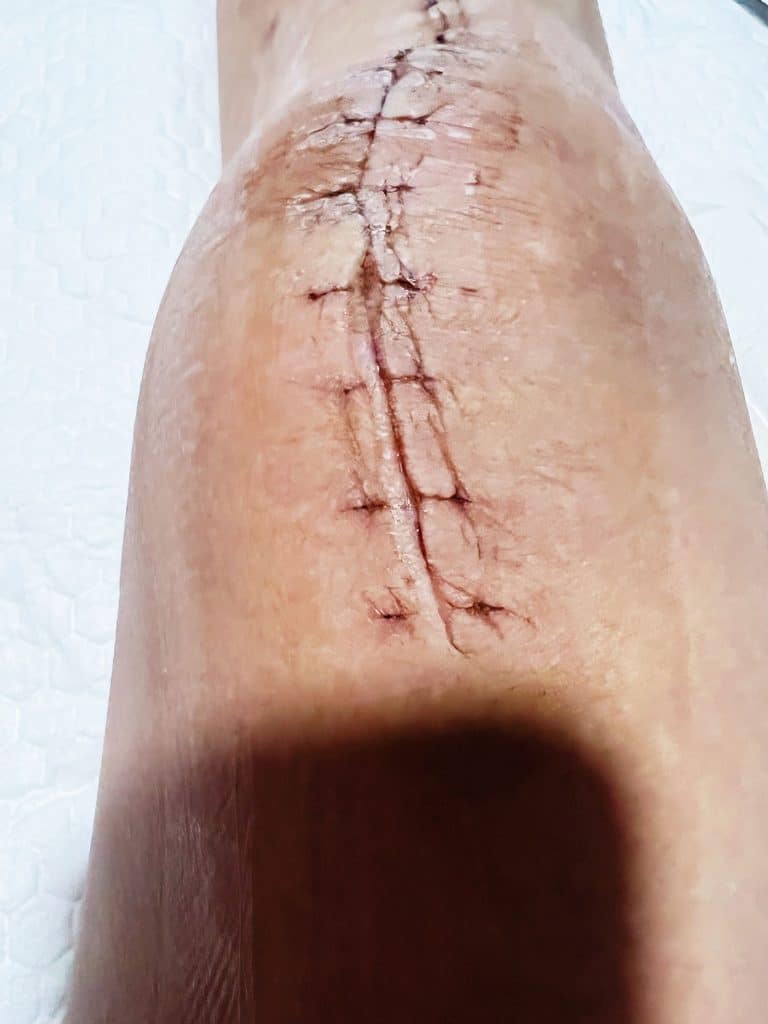

3.1 Hospital-Grade Isopropyl Alcohol Wipes (for Cleaning Your Wound)
The alcohol wipes are essential for sterilisation of the skin and your knee surgery wounds. We’d dab the wounds quickly without rubbing, and never used the same surface twice. As the surgeon cautioned, all sorts of germs live on the skin, and you don’t want to spread them into your wounds.
3.2 Steri-strips / Adhesive Skin Closures (if Your Injury Site is Still Split Open)
As my flesh was still split open, the surgeon used steri-strips as placeholder stitches. We’d use them to pull my skin together using a simple technique. These are essential to help your skin heal, and to ensure that they don’t sag further to the sides.
3.3 Sterile Cotton Dressings (to Absorb Moisture & Pus)
After that, the sterile cotton swab goes on top to absorb any moisture or pus. Ensure that it covers your entire wound area. I’d fold one up for extra padding and better absorption.
3.4 Tegaderm Plasters (to Seal & Secure the Dressing)
Tegaderm plasters are those transparent seals they use at the hospital to secure any IV lines, and where they scribble the date of insertion on. This goes on top of the sterile cotton dressing to seal and secure it. It also prevents any water from seeping in, which may cause your wound to become infected.
3.5 Other Wound Dressing Supplies
I also had regular plasters in all shapes and sizes. As my wounds healed, I could patch up different parts with greater precision. Needless to say, this was a hassle and the dressings were uncomfortable. I couldn’t wait to rip them off my knees and let the skin breathe. But for now, keeping your wounds clean is of paramount importance, or risk a delay in your recovery process.
Knee Surgery Wound Cleaning & Dressing Order
4. Scar Recovery Silicone Gel (Only After Your Wounds Have Closed Up)
When your knee surgery scars have closed up fully, your surgeon may allow the use of a silicone scar recovery gel. I’ve been applying it on my knee scars daily, though I should be more religious about the routine. They will take some time to look less visible though, as these scars are pretty huge.
5. Basins, Baskets, Bins & Containers
You don’t need fancy ones. I use reusable or disposable ones that we already have in our kitchen. I have basins and cups of various proportions for brushing my teeth, washing my hands and face and even my hair whilst in my bedroom. You’ll obviously need a pretty big basin for washing your hair or face.
Baskets or containers are also useful for keeping things you might need together in one place. Pens, plastic bags, medication pouches, hair ties, books, power banks, etc. You can also put different baskets as ‘holders’ in different locations, such as a set for the bathroom, skincare products, for the bedroom, in the living room, etc.
Conclusion to Wound Care & What to Wear After Knee Surgery
To conclude, post-op wound care is of first priority, as the slightest infection can stall your recovery process or lead to a worse situation. Dress as comfortably as you can in baggy clothing, and keep your blood circulating through little movements. Compression clothing such as gloves and stockings can be helpful for that as well.
Whilst dresses were more comfortable for me at home, they weren’t as practical outside. Adaptive shorts with side fastenings were much easier as I was transported and wheeled around for medical appointments. Finally, if you’re a female who gets periods, using disposable overnight panties or period underwear can save a lot of hassle and worries as you lay in bed all day long. There is also a range of accessible underwear that come with side fastenings, so do check those out!
Know that you are not alone in your recovery journey. Sending plenty of good thoughts, and don’t forget to check out the links below for more tips and resources if you found this post useful!
Pin to Your Wound Care & What to Wear After Knee Surgery Boards:

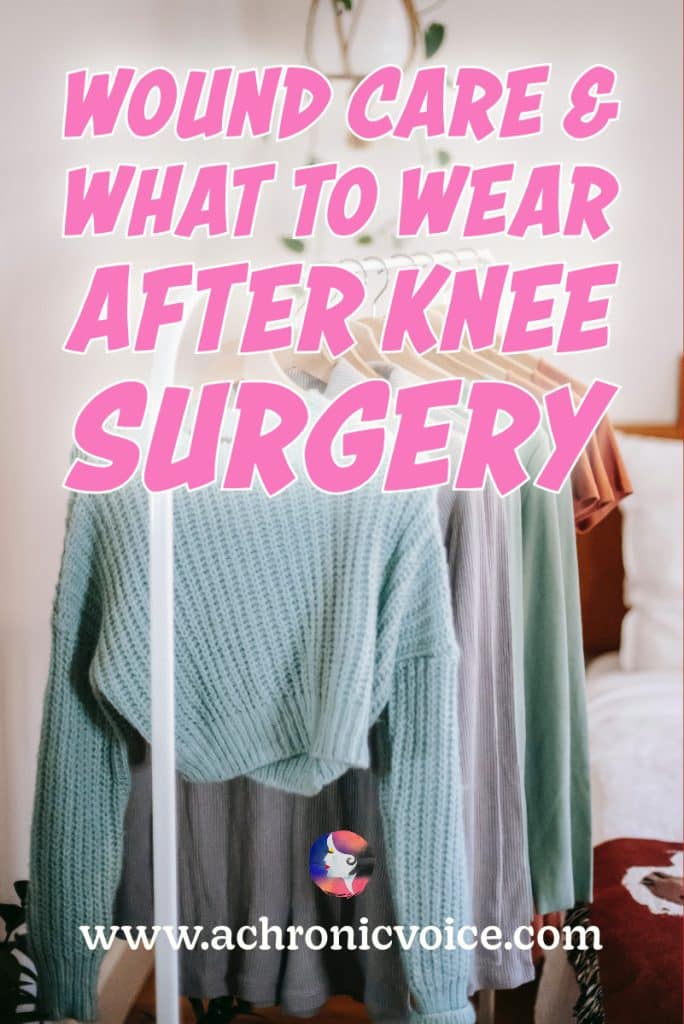
If you liked this article, sign up for our mailing list so you don’t miss out on our latest posts! You will also receive an e-book full of uplifting messages, quotes and illustrations, as a token of appreciation!
-
References:
- Lim, C. S., & Davies, A. H. (2014). Graduated compression stockings. Cmaj, 186(10), E391-E398.








